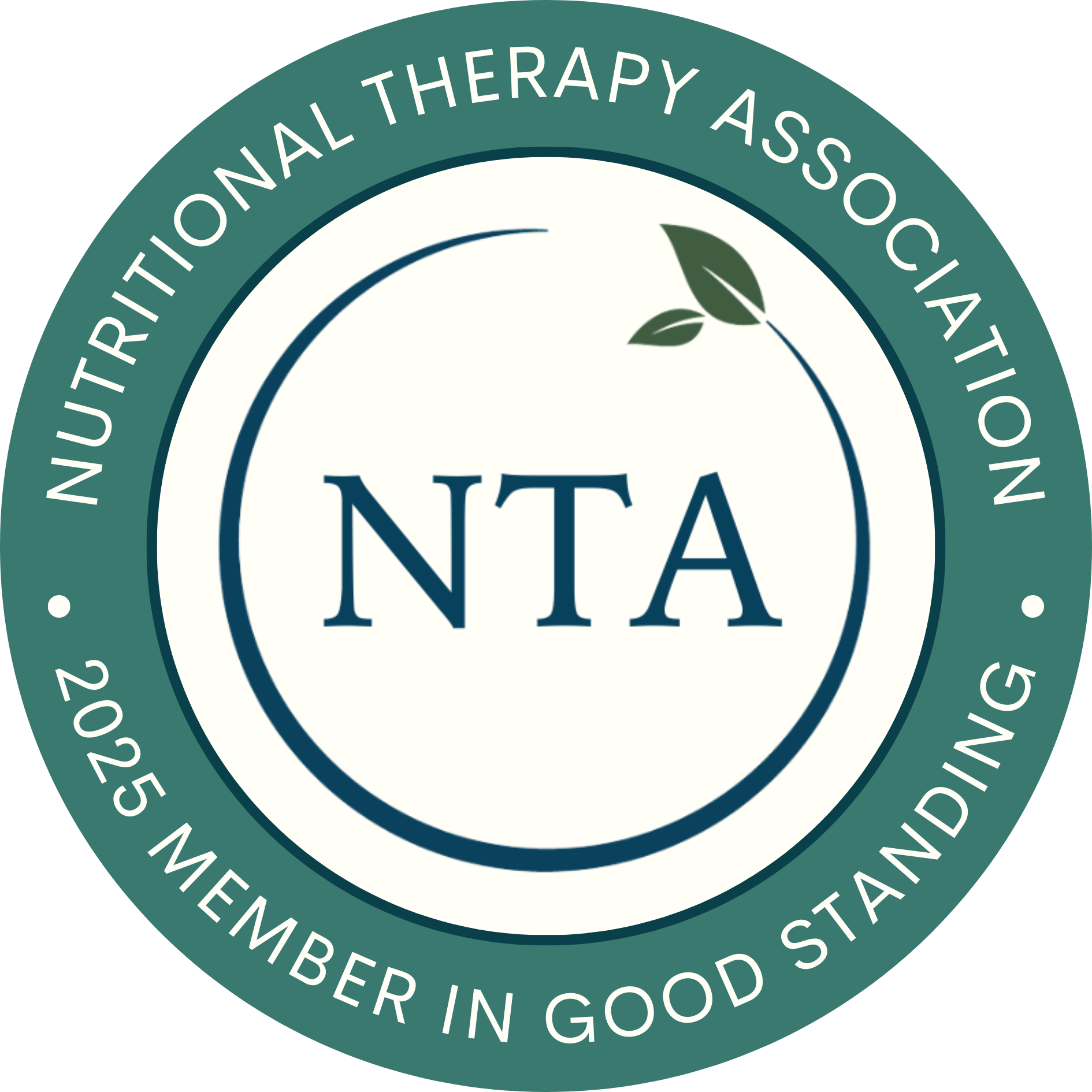Cellular Health - Tip #1: Take sunshine breaks

Please note that while these lifestyle tips are intended to support your health, please remember, holistic nutrition is not a substitute for medical advice or for your family physician or other appropriate healthcare provider. If you suffer from a medical or pathological condition, you need to consult with an appropriate healthcare provider. A Registered Holistic Nutrition Practitioner is not trained nor licensed to diagnose or treat pathological conditions, illnesses, injuries, or diseases or prescribe medications.
Every individual is different and your unique needs and bio-individually should always be honoured.
Please disregard, if they are not appropriate for you.
One of the most foundational aspects of our physiology is our circadian rhythms - the beautiful flow of biologically processes that play out over the course of our 24 hour day, with the light (of the sun) being the most powerful initiator.
Light is an example of what’s called a “zeitgeber” or, as the German’s say, “time-giver”, a signal that starts the clock. Other zeitgebers include activity, temperature, and food.
Circadian light cues received in the morning in particular signal to every cell in our body when the day begins and therefore when it ends.
With this critical signaling, our body understands how to pace out, synchronize, and regulate its functions for the day, performing what it needs to perform, and when it needs to perform it.
It’s like having a leader who clearly tells you exactly what project or work you need to get done and how long you have to complete it.
Clear directives give you a clear sense of how to proceed.
On the other hand, imagine having a leader who doesn’t tell you when you need to start a project or that certain work is required of you - you only find out later, when another department is asking for the work.
How do you feel in this type of scenario?
You probably feel a little lost and confused!
The same idea holds with how your body feels in the absence of light signaling.
The body can carry out its functions in a much better fashion when it receives the proper cuing, but it gets lost, confused, and misfires without a syncopating force.
As I shared in my original post on Re-thinking the structure of our workday to support cellular health, many of us spend a great deal of time indoors and our workdays often have us locked in, pushing through our work priorities.
In the post, I posed the following two reflection questions:
- Have you ever had a health challenge that you just couldn’t budge, despite your best efforts using diet and/or exercise?
- How do you feel when you don’t get outside in a day and are stuck indoors and on a screen for more than 4 hours at a time?
These two questions serve to uncover how your body might be responding to insufficient or ill-timed light in your environment.
Our bodies are unique and complex, of course, but that which is foundational to our health (and everything that I talk about) is deserving of our attention and aspects we simply must ensure are in place.
How does sunlight support optimal function?
I find using the analogy of dominoes helps me understand and explain sunlight’s role in supporting our body, particularly when it comes to our hormone/endocrine health.
Let’s have a look how light serves as the first domino to set off a chain reaction of events:
1st domino: sunlight!
2nd domino: light is absorbed - light energy (or what is known as photons) enters our eyes and is absorbed by special receptors in our eyes, called opsin receptors.
Of note here is that the health of our eyes really is more influential to our circadian and hormone health than we may realize. It is worth considering your eye health in the picture of these areas.
3rd domino: impulse is sent – once the light is absorbed, this sends a nerve impulse to a location in our brain called the Suprachiasmic Nucleus (it sounds like something from “Ghostbusters, doesn’t it? You’ll be glad to know it is also commonly referred to as “SCN” for short). It is located within our hypothalamus, which perhaps you have heard of.
The SCN actually serves many regulating functions that tie into our circadian rhythms like sleep, hormone secretion, and even metabolism. I don’t think many of us often piece together our metabolic health, with our circadian health.
4th domino: neurotransmitters & hormones released – because the hypothalamus is our master “neuroendocrine gland” (“neuro” referring to our brain, and “endocrine” referring to our hormones), it orchestrates the release of master neurotransmitters and hormones that will further regulate function.
These include: tryptophan, which will convert to serotonin, and then finally to melatonin, cortisol, and leptin.
If you can imagine, that melatonin that is already created in the morning hours is going to work for us and acting upon our cells as the day goes on. It in fact helps to fuel our mitochondrial function and support the production of energy during the day, and will serve us later when we sleep at night! Cellular health experts refer to this as the “Melatonin Cycle.”
Cortisol (our wakefulness hormone that yields energy, focus, and alertness), and leptin (which helps regulate energy production and our hunger/satiety balance).
In short, this chain reactions sets us up for the best of all possible worlds:
- We wake up prompted by light (thank you sun)
- We are in a positive mood and ready to take on the day (thank you tryptophan and serotonin)
- We feel energized and alert (thank you morning spike of cortisol and melatonin supporting our mitochondria)
- We feel hungry and ready for protein and fat that will sustain our energy and satiety (thank you leptin)
- At night, we feel ready to sleep and sleep deeply (thank you melatonin)
Do you see how it all fits together?
This beautiful roll out also ensures cortisol is optimally regulated and less likely to “steal” ingredients that would be needed for the production of our sex and thyroid hormones and everyone’s happy.
Of course, this only reflects some aspects of our hormones, but you can note that that morning sunlight also stimulates the function of our liver and pancreas, which will help us create digestive enzymes, and bile that will help us digest our food.
It’s really just the tip of the iceberg!
Circadian health is so far reaching, I’ll be sure to share more examples in future posts.
Sunshine break strategies
In this tip, let’s explore some different strategies you can use to fit sunshine breaks into your workday, so that you are getting outside intentionally and supporting your body with an abundance of light to optimize its functions.
Morning sunlight – it’s a must
Regardless which strategy you go with, it is important that you receive morning sunlight – ideally going outside to receive it, but if you can’t, even opening a window will help.
- Rise within 30 minutes of sunrise and allow natural sunlight to be the first light that enters your eyes
- If this isn’t possible, at least keep lights dim until sunrise when you can get outside
- Spend 5 – 15 minutes in this morning sunlight (even on a cloudy day) every single morning (including weekends and vacations)
Aim to make this ritual as consistent as your morning coffee.
In fact, you can even just have your morning coffee outside! People don’t usually need to be prodded to have their morning coffee, so it might be a sneaky way to pair those habits.
Aside from this, here are a few other ideas:
Strategy #1 – Breakfast, lunch & dinner walks
- As simple as it sounds, getting out and doing a 10-15 minute walk (or whatever time you have available) after breakfast, lunch, and dinner can actually offer more than you realize – sunlight, movement, breathing, and reflection, you really can’t go wrong here. It is easy to ritualize, and allows for a recalibration on every level after each meal
Strategy #2 – Time block breaks
- Some people organize their day in terms of time blocks – I know I do. You can mark the ending of a time block (which is usually 1.25 – 1.5 hours) and transition to the next time block with a quick dose of outdoor time. Even if it’s 5 minutes, go for it! The minutes add up over the course of the day and every little bit counts. It is certainly not an “all-or-nothing” approach you want to take...it’s more like a “take every bit you can get” mindset!
Strategy #3 – Book-end your days with sun & darkness
- While this one is not necessarily the best strategy, sometimes you just have to do what you’ve got to do, if it’s “one of those days.” Having a “no less than” strategy in your back pocket comes in handy so that you don’t lose traction altogether. With this one, honour your morning sunlight (that should be a staple), but couple it with experiencing natural darkness at night, with little to no exposure to artificial light or screens after the sun goes down. If you have been on screens all day, that’s enough. Your body needs a break and let the evening hours be that break.
Again, you needn’t think of these as an “all-or-nothing” approach.
Prioritize that morning sunlight and simply get little breaks in where you can as the day goes on.
"The sun. The bright sun, that brings back, not light alone, but new life, and hope, and freshness to man — burst upon the crowded city in clear and radiant glory." - Charles Dickens
References & Further Reading
In the context of this topic, I wanted to share a wonderful blog post by Vivarays, which shares a how sunlight supports mitochondrial health and the energy we need to create new/positive thoughts:
Vivarays. (Mar 23, 2023). The Power of Mitochondria: How Sunlight and Darkness Affect Your Reality, Energy, and Health. Retrieved from: https://vivarays.com/blogs/news/the-power-of-mitochondria-how-sunlight-and-darkness-affect-your-reality-energy-and-health-vivarays-blog
Atlas of Science. (Apr. 20, 2018). Melatonin protects the powerhouses of cells, the mitochondria. Retrieved from: https://atlasofscience.org/melatonin-protects-the-powerhouses-of-cells-the-mitochondria/



